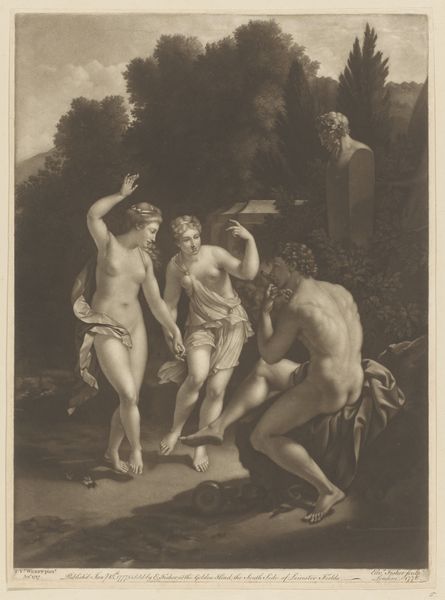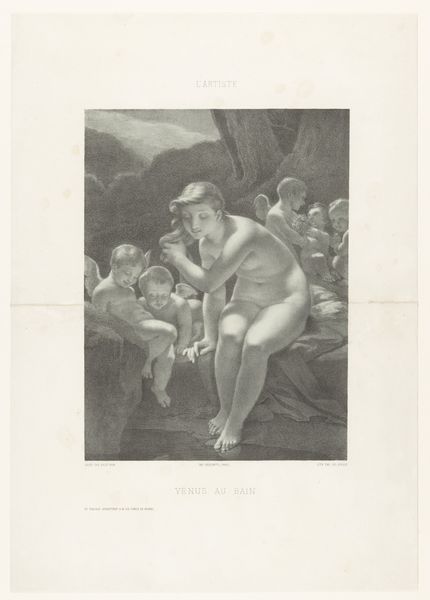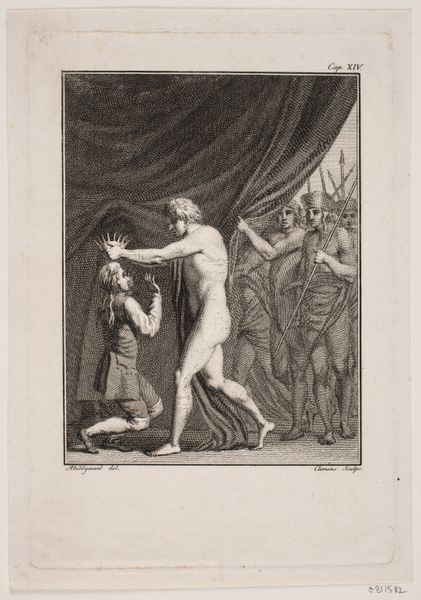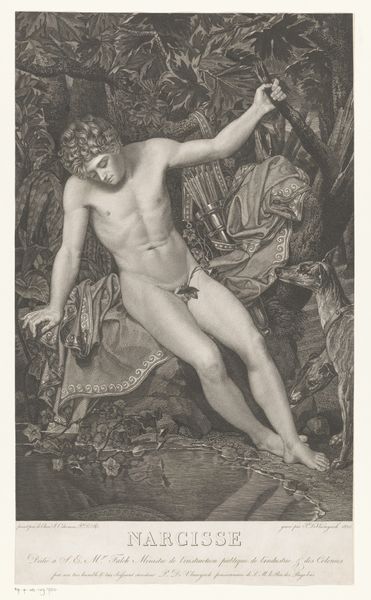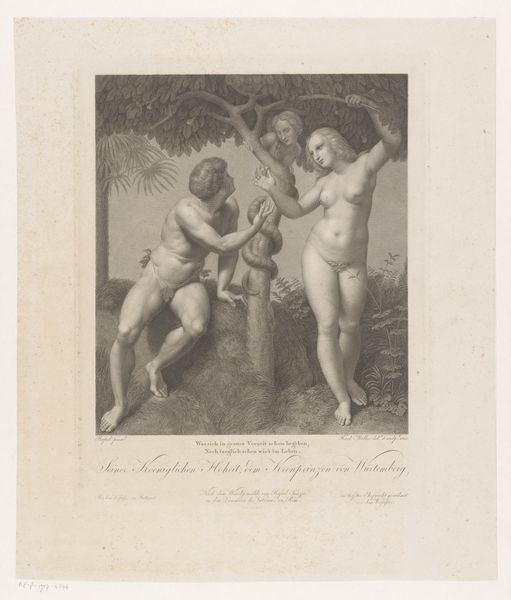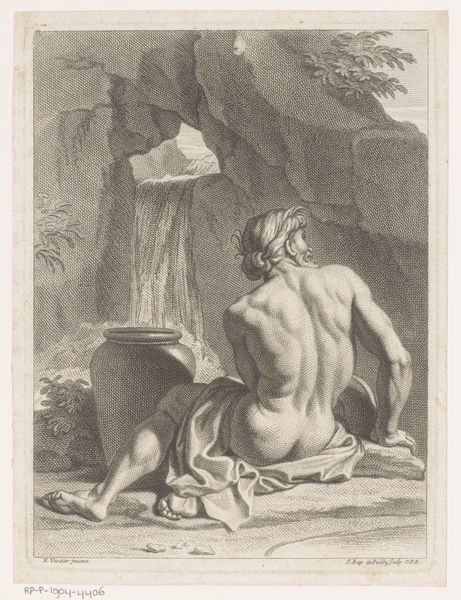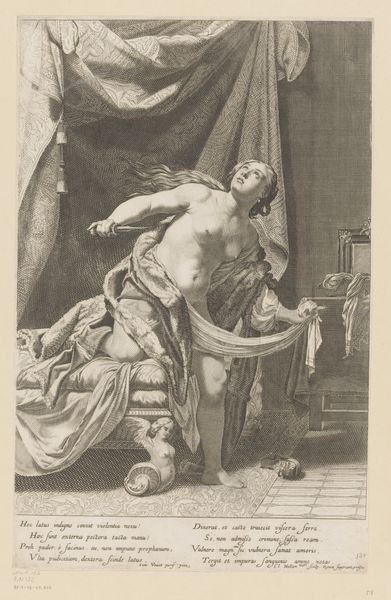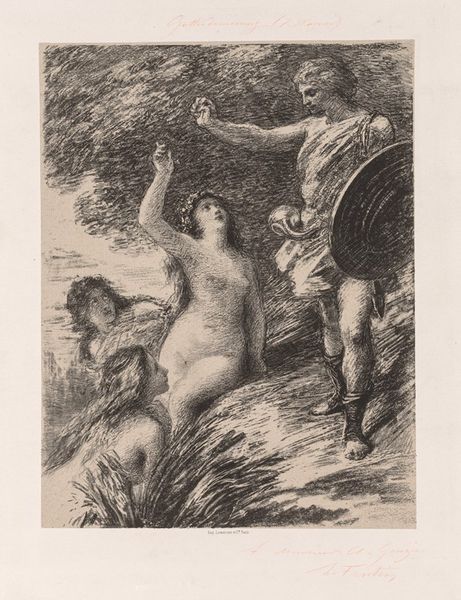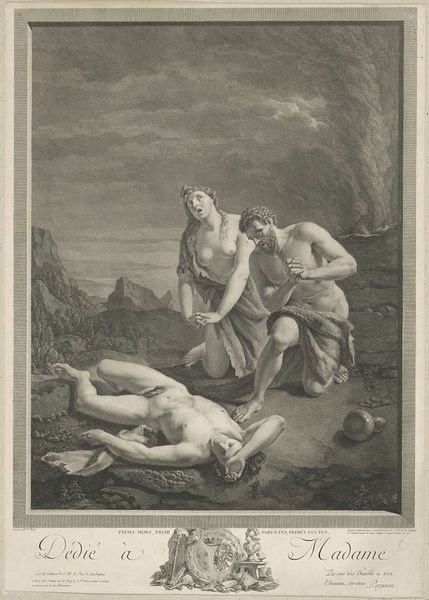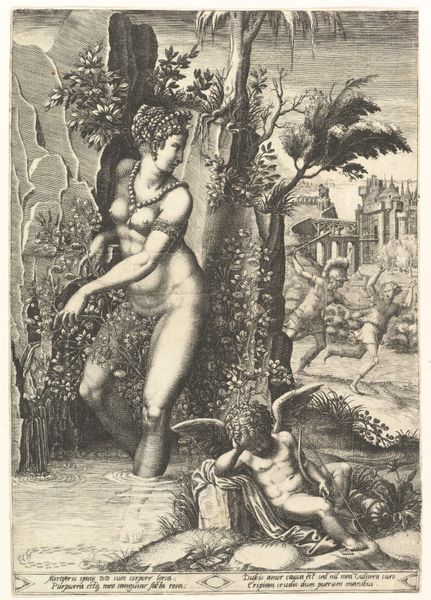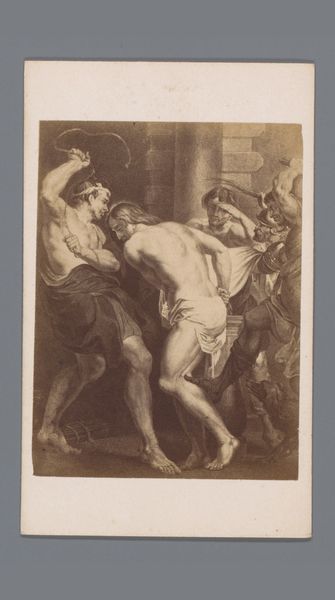
Oedipus and the Sphinx, after Ingres 1867 - 1887
0:00
0:00
Dimensions: sheet: 19 5/16 x 12 3/8 in. (49 x 31.5 cm) plate: 10 1/16 x 7 1/16 in. (25.6 x 18 cm)
Copyright: Public Domain
Curator: At first glance, this image seems to present such a calm moment. It’s quiet, almost sterile. The monochrome really accentuates the sense of austere intellect. Editor: You see calmness? I see a really tense negotiation! The air practically crackles with a power struggle. Who holds the knowledge, and what price will they demand? It’s unsettling. Curator: Indeed, Claude-Ferdinand Gaillard, working between 1867 and 1887, made this engraving “Oedipus and the Sphinx, after Ingres." Note how he replicates Ingres' iconic neoclassical composition in monochrome print, amplifying the symbolic drama. It's a scene deeply embedded in our cultural consciousness. Editor: Exactly. It pulls up so many charged associations – gender, power, knowledge, and the danger of those things. The Sphinx is usually portrayed as this monstrous creature, but here she’s almost beautiful, offering this twisted knowledge to a very muscular, almost aggressive Oedipus. What are the power dynamics at work, right? Curator: Oedipus represents human intellect confronting ancient mystery. Gaillard gives form to our fascination with riddles. Consider the persistent recurrence of the Sphinx figure through art history; each generation reinvents this meeting, revealing evolving social preoccupations with self-deception and societal secrets. Editor: It also exposes a troubling history, that only a privileged few have had the resources, space, and cultural permission to even engage in that battle of wits with a ‘monster’, that mostly affects those on the periphery. Look, others have literally been crushed by that encounter. Knowledge is gate-kept. The ‘hero’ survives – others are destroyed, lying literally beneath his feet in the image’s lower left. Curator: Yet those prone bodies might also symbolize past failed attempts—foreshadowing mortality for even the hero? Are they not a warning woven into the very fabric of the scene, that unchecked ambition yields grim rewards? I believe, then, that through Gaillard’s image, these cultural patterns speak not of division, but human continuity: Our collective drive towards awareness and mastery. Editor: Perhaps we simply read it differently, because for me, ‘mastery’ here rings hollow if its cost is burying the voices beneath, silenced by the insatiable pursuit of enlightenment. Curator: Interesting to see the interplay of darkness and light reveal our distinct points of view; art truly becomes a mirror reflecting not just the artist’s, but our own inner landscapes.
Comments
No comments
Be the first to comment and join the conversation on the ultimate creative platform.

